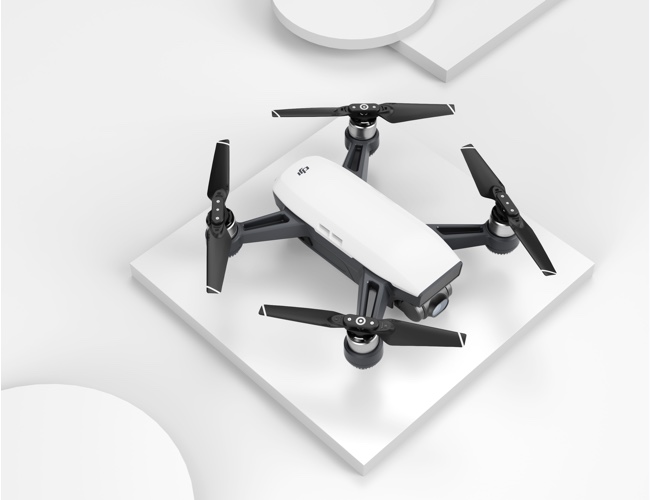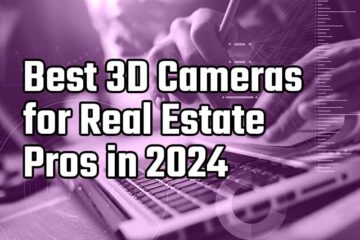Best Drone for Real Estate Videos and Photography in 2019
| Drones | |||
| Spark | 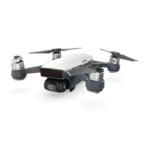 | The Spark is an affordable entry-level drone that can shoot HD. It can likely serve most of your real estate needs unless you need 4K. | |
| Mavic Air |  | The Air is probably the best for real estate, can shoot 4K and still reasonably priced. | |
| Mavic Pro 2 | 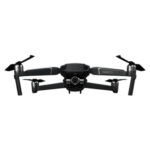 | The Mavic Pro is still a solid option, and the Mavic Pro 2 slightly more powerful, likely a solid choice for professional videographers. |
DJI
DJI is a Chinese company that is the leader of the pack in drones and aerial photography.
They make gimbal stabilization technology not just for drones but for handheld gimbals as well.
DJI is one of the most trusted drone brands with numerous resources online and from professionals on how to maximize your experience with their equipment. I recommend shopping their products, and personally own a DJI Mavic Pro I bought in 2017 for my real estate business.
Your decision likely comes down to choosing between the Spark and the Air.
Spark
DJI Spark is an affordable entry-level drone that works just fine for most of your real estate needs. It produces high-quality HD video and is stabilized just as well as any other drone.
The main thing it does not have is 4K video capability. You don’t need 4K to look good on YouTube or Facebook and almost anywhere your real estate videos will be displayed.
If you are a luxury agent, however, or a video professional, you’ll want to skip up to 4K capable options.
Mavic Air
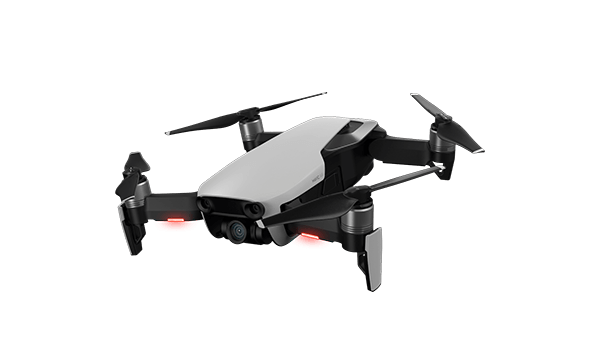
I’d wager the Mavic Air is the #1 choice for real estate agents if you need a 4K camera and aren’t one of the few exceptional cases that might need the use of the Mavic Pro editions instead. I’ll talk about those in a moment.
The Mavic Air is tiny.
Its video quality is a little better than the Mavic Pro, and it has more features like rear obstacle avoidance.
It has a shorter flight time than the Pro models, but that can be solved by getting more batteries if you are a power user.
Here’s an example Mavic Air real estate video:
Mavic Pro and Pro 2

You may have heard of the Mavic Pro and Pro 2. I own a Mavic Pro, and it is great!
That said, you are probably better off with the Mavic Air. It is cheaper than the Pro 2, and better than the Pro.
The Mavic Air is much smaller and therefore more portable than either Mavic Pro edition.
The only case in which you may prefer a Pro to the Air is that these larger drones (they’re still just the size of my hand) do have a few minutes longer battery life and slightly larger radius (8 miles versus about 6 miles).
If you are doing videography in the urban areas of Europe, you might also want to consider a Pro. They have OcuSync which helps with latency (ideal if you are using the goggles to fly) and avoiding interference from WiFi in urban environments which can help prevent flyaways.
I don’t recommend flying 6 miles away, let alone 8, and no distance so far that you should have to worry about a flyaway. But if you have a business need for OcuSync, goggles, or longer battery life per battery, the Pro editions might win out.
I’m also all about saving money. DJI has a program where you can get quality refurbished Mavic Pro drones with the DJI warranty for about the same price as a Mavic Air.

Here’s an example real estate video with the Mavic Pro!
DJI Competitors
Competitors? DJI has competitors?
Indeed, DJI, has approximately 74% of the drone market. That is a really established brand!
As mentioned above, there is a network effect to using the dominant brand in an industry. There are many more resources online for DJI drones, how-tos, best practices, etc, than there are for DJI’s competitors.
But 74% is not 100%.
I don’t have personal experience with non-DJI products. If you’re interested in exploring the non-DJI world, here is an article for you!
Essential Accessories
Most of the below accessories you can add with your drone purchase.
Spare Batteries
Your typical flight time per battery for any given model is 20-25 minutes. That is not long, especially if you are a professional trying to film multiple homes in a day. I bought an extra pack of batteries to keep charged and it’s great.
Cover
I purchased the extra batteries. I got the spare blades. But I figured I would make it work without the cover.
And I have, so far. But it’s not easy. I definitely see the need for them. Your iPad or smartphone screen is just really hard to see in the middle of the day and backlit by the sun.
Not being able to clearly see what you are doing isn’t a great way to produce great drone photography and video.
Spare Blades
I’ve been gentle with my Mavic Pro and haven’t needed to replace the blades yet, but they are a little worn. From hitting blades of grass when landing to the odd mishap, these pieces apparently aren’t mean to withstand too much torment. You don’t want a day out flying wrecked because a single blade snapped.
Goggles?
These are not at all essential. I don’t think you need them if you are in real estate photography. But I guess they’re cool!

Drone Rules and Laws
You do need to be licensed to fly drones for your real estate job.
And, unfortunately, the FAA has notoriously made flying excessively complex for drone pilots.
Here are the rules for a Part 107 license that you will need to fly your drone for your real estate business. You’ll have to study up and then pay to take the test in a location near you (my test was at the Austin-Bergstrom International Airport).
Here’s a thorough how-to on getting your license.
This was one of the videos I used to help study when getting my license. It worked! I studied very last minute – and still passed!
Tony and Chelsea Northup’s YouTube channel is a great resource for drone-ers generally.
Real Estate Drone Resources
Parker Wallbeck is a general photography channel with some good real estate content I would follow!
Grant Johnson is a smaller channel, but is focused on real estate videography, including not only drone footage but gimbals and the other tool sets you’ll need to put together a full listing video.
DroneU is another prolific channel with lots of advice aimed at professional drone users and business owners, including their real estate drone videography tips here.
My Personal Experience
I bought a Mavic Pro in 2017 for about $1500 after tax and accessories. It was really cool, and I did some fun things with it like my Facebook cover video. It can shoot 4K, has amazing stabilization, is easy to fly, and I am shocked by how awesome technology is in the 21st century.
Even though DJI has come up with the Mavic Pro 2, the Spark, and many other models since then, the reality is my Mavic Pro does everything I or any reasonable professional would likely need in a camera.
I’m not saying you should but a Mavic Pro. You should buy a cheaper and newer model. But it just illustrates that you can get a lot of mileage from your drone (if you take care of it). It won’t be “outdated” technology any time in the foreseeable future.
Even though I bought my own drone and got my own license, I actually still hired a local videographer to do most of my drone footage. I am not an artist and don’t know all the settings and tricks do to with photography/videography.
One thing I did after ordering my drone was spent time on YouTube watching crash videos. I hoped that maybe I would pick up some instincts on keeping my drone safe!
There’s a whole channel just for “drone crashes”!
Conclusion
Curious to see how other real estate agents are using video in their business? I put together a list of the top agents who are using video in their real estate marketing, as well as a fun list of funny real estate videos for you to check out.
To sum up, in my opinion, the Mavic Air is probably the best drone for real estate. The Spark will do just fine for agents who don’t need 4K. And both Mavic Pro versions are great all-in-one options as well.
